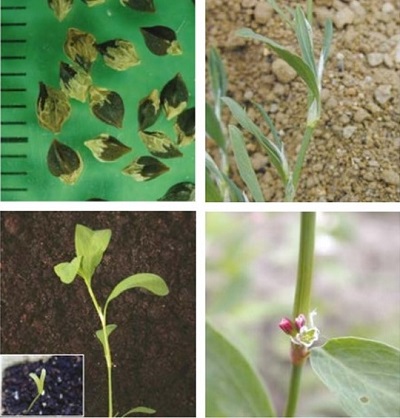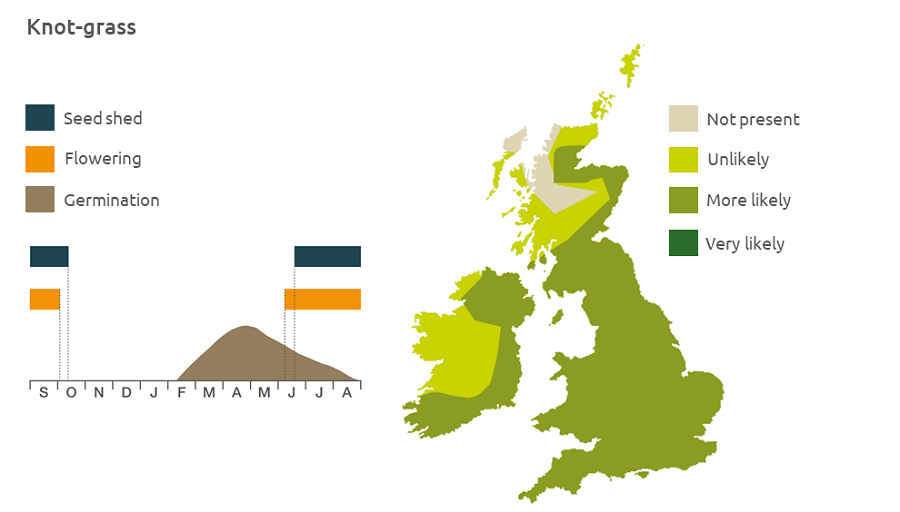- Home
- Knowledge library
- Distribution and biology of knot-grass in the UK
Distribution and biology of knot-grass in the UK
Knot-grass is a broad-leaved weed that is a particular problem in open spring crops. Find out how to identify and control it.
Overview
Knot-grass (Polygonum aviculare) tends to be a worse weed in open and spring-sown crops, such as spring beans, sugar beet, kale, linseed and potatoes, than in winter cereals and winter beans.
It reproduces from seeds, which can form a persistent seedbank. The seeds are relatively large; they may be dispersed in mud on footwear and on tyre treads and can survive ingestion by stock and by birds. They germinate largely in spring and are returned to a state of secondary dormancy when late spring temperatures rise, so produce only one generation a year. Autumn-germinating seeds do not survive the winter. The vegetative part of the plant can regenerate if cut off during the growing season.
- It is particularly competitive in spring crops
- It has value to biodiversity
Description
It is a low-growing spreading annual, 10–100 cm long, with many branched stems; the plants may be creeping or upright and in a cereal crop may have vertical shoots. The leaves are narrow and spear-shaped.
Key features
Young plant: The hypocotyl is long and crimson.
Plant: The stems do not end in a flowerhead, as the tiny pink flowers occur in the leaf axils.

Location and life cycle

Geographic distribution
Knot-grass is found up to an altitude of 550 m in all areas of Britain. It is common on arable and other disturbed or trampled land, demolition sites, soil heaps, manure and waste heaps, paths and tracks but not woodland or very wet habitats.
Soil type
It is most frequently found on bare fertile soils, but not waterlogged sites.
Seed statistics
- Seed longevity: >5 years
- Seed weight: 1.45 mg
- Seeds/flower: 1
- Seeds/plant: Up to 1,000
Management
Dormancy is broken by winter chilling so spring cultivation can increase plant numbers. Shallow burial promotes emergence compared with deep ploughing but ploughing will increase the persistence of seedbanks.
For advice on herbicides, please speak with your agronomist or adviser.
When was this information last updated?
This page is based on content from the encyclopaedia of arable weeds publication. Since it was first released in 2008, the publication has been redesigned several times but not revised. However, it remains a good foundation for general information on the distribution and biology of weeds.

